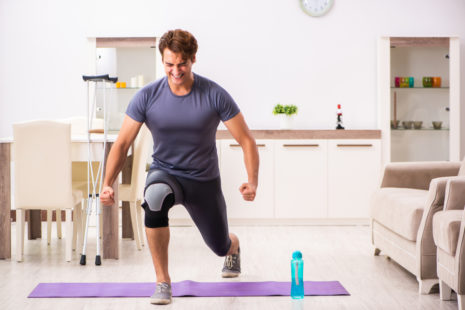Yes, gymnastics can indeed cause stress fractures. Stress fractures are small cracks or hairline fractures in bones that develop over time due to repetitive stress or overuse. Gymnastics involves high-impact landings, repetitive movements, and intense training regimens, all of which can contribute to the development of stress fractures in various parts of the body.
Here are some reasons why gymnastics can lead to stress fractures…
- Repetitive Impact – Gymnasts frequently perform jumps, landings, and dismounts from apparatus such as balance beams, vaults, and bars. The repetitive impact from these activities can place stress on the bones, particularly in the feet, ankles, shins, and lower back, increasing the risk of stress fractures over time.
- High-Intensity Training – Gymnastics training often involves long hours of intense physical activity, including tumbling passes, flips, and twists. The repetitive nature of these movements, combined with the high forces exerted on the body, can contribute to overuse injuries such as stress fractures, especially if athletes do not have sufficient time for rest and recovery.
- Surface Hardness – Training and competing on hard surfaces such as gym floors and mats can increase the impact forces transmitted to the bones during landings and jumps, further predisposing gymnasts to stress fractures.
- Bone Health – Gymnasts, particularly female athletes, may be at increased risk of stress fractures due to factors such as low bone density, nutritional deficiencies, or hormonal imbalances. Intense training regimens and energy deficits can compromise bone health, making gymnasts more susceptible to stress fractures.
- Equipment Use – Gripping bars, rings, and other apparatus can also contribute to stress fractures, particularly in the wrists, arms, and hands, due to the repetitive stress placed on these areas during training and routines.
To reduce the risk of stress fractures in gymnastics, athletes, coaches, and trainers should prioritize the following…
- Gradually increasing training intensity and duration to allow the bones to adapt to the demands of the sport.
- Ensuring proper technique and form during gymnastics maneuvers to minimize excessive stress on the bones.
- Incorporating rest days and recovery periods into training schedules to allow for tissue repair and regeneration.
- Maintaining proper nutrition and hydration to support bone health and overall performance.
- Using appropriate footwear and protective gear to minimize the impact on bones during training and landings.
- Monitoring athletes for signs of overuse injuries, such as persistent pain or swelling, and seeking medical attention promptly if needed.
By implementing these preventive measures and promoting a culture of safety and injury prevention, the risk of stress fractures in gymnastics can be minimized, allowing athletes to train and compete safely and effectively.




